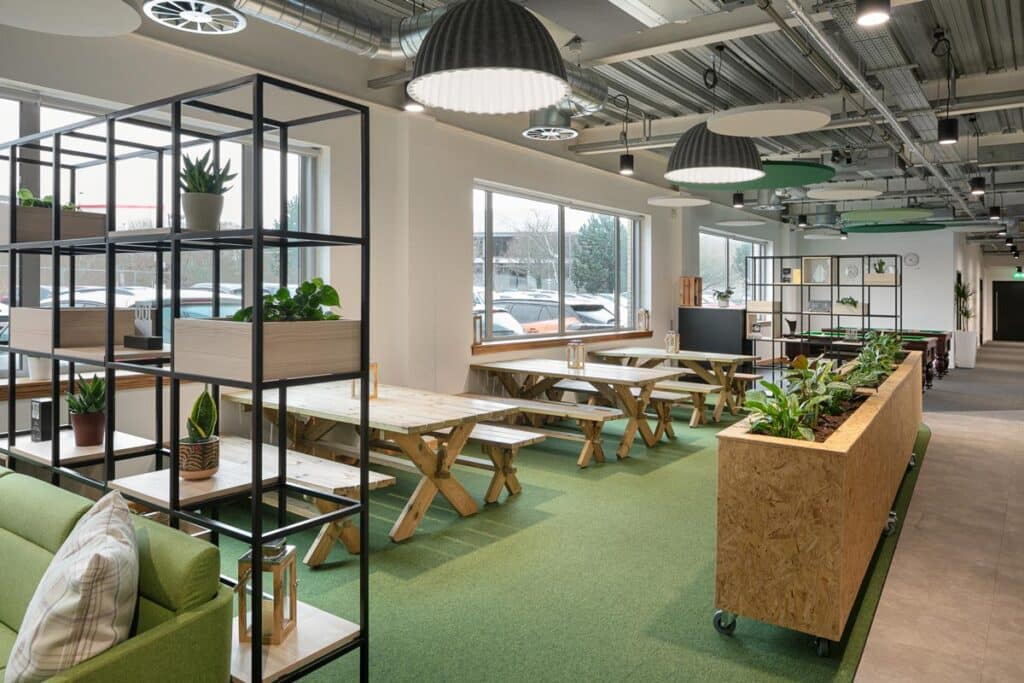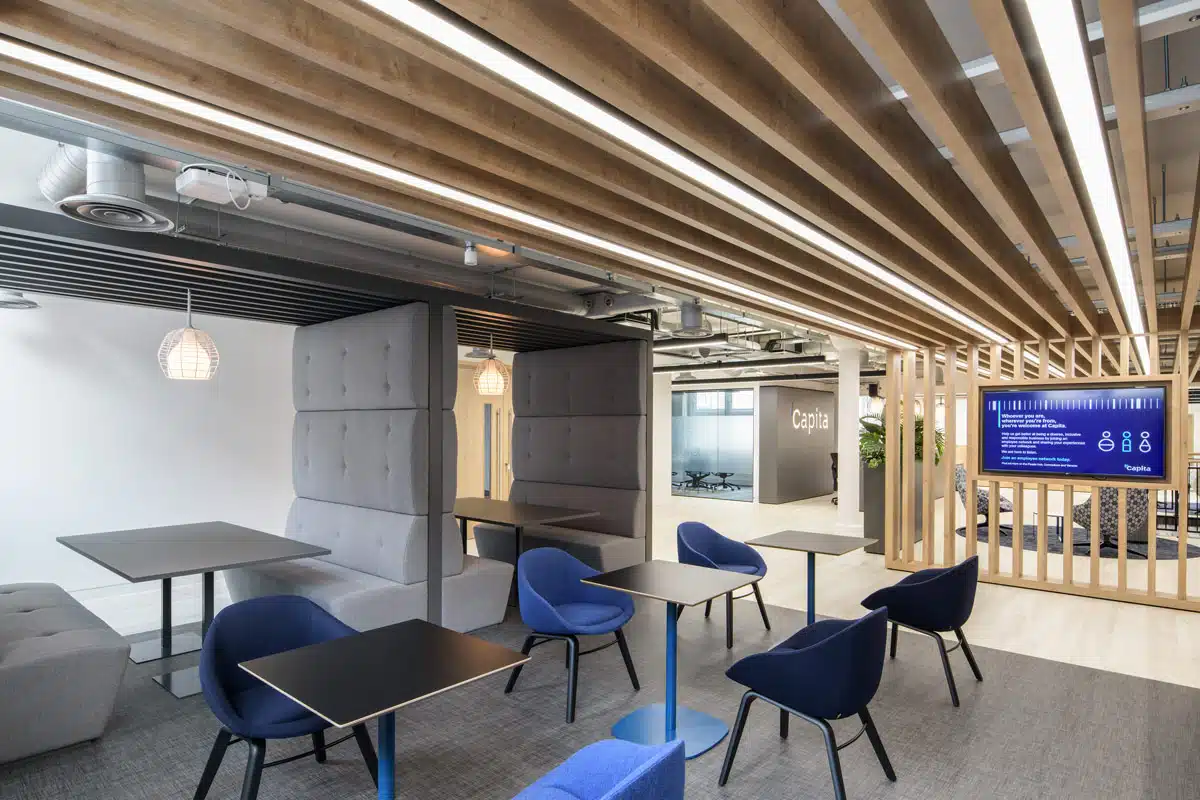As companies strive to create workplaces that foster productivity, well-being, and sustainability, biophilic design in office fit-outs has emerged as a leading solution. More than just adding a few pot plants, this approach integrates nature into the built environment in meaningful, functional ways. When thoughtfully applied, it transforms spaces into healthier, more inspiring places to work — enhancing staff satisfaction, boosting performance, and supporting retention.
At ADT Workplace, we understand how critical workplace experience is to business success. Here’s how biophilic design is reshaping modern office environments — and why it should be part of your next office fit-out.
What Is Biophilic Design?
Biophilic design is a concept that centres around the human connection to nature. It involves using natural elements — such as daylight, greenery, water features, natural materials, and organic forms — within interior spaces to mimic outdoor environments.
According to leading research, exposure to natural elements in the workplace can reduce stress, improve mood, and even enhance cognitive function. For businesses, this translates into improved productivity, reduced absenteeism, and increased staff engagement.
The Core Principles of Biophilic Design in Offices
1. Maximising Natural Light
2. Incorporating Greenery
3. Using Natural Materials
4. Creating Visual and Physical Access to Nature
5. Organic Forms and Biomimicry
Why Biophilic Design Matters for the Modern Workplace
The shift towards hybrid working has changed the role of the office. It’s no longer just a place to work — it’s a space for collaboration, culture, and creativity. As such, the physical environment must offer something more than just desks and meeting rooms.
Biophilic fit-outs create spaces that people want to spend time in. Employees report feeling more energised, motivated, and focused in nature-connected environments. For employers, this results in better performance, reduced turnover, and a stronger workplace culture.
Moreover, biophilic design can contribute towards sustainability goals. Natural ventilation, energy-efficient lighting, and greener material choices reduce carbon footprints and operational costs. Combined with environmental certifications such as BREEAM, these choices also enhance a company’s reputation and CSR credentials.
Practical Applications: Biophilic Features in Fit-Out Projects
Whether you’re redesigning a small breakout space or undertaking a full workplace transformation, there are many ways to integrate biophilic elements:
- Reception Areas: First impressions matter. A reception with natural timber, soft lighting, and greenery sets a welcoming tone for both staff and visitors.
- Focus Zones: Quiet areas benefit from natural acoustics, textured finishes, and calming biophilic visuals to reduce stress and encourage concentration.
- Collaboration Spaces: Flexible, open areas with a mix of greenery and organic shapes create a sense of openness and support idea-sharing.
- Wellbeing Rooms: Dedicated wellness areas featuring daylight, plants, and natural materials offer a restorative escape within the workplace.
Final Thoughts
Biophilic design is more than a passing trend — it’s a proven approach to creating workspaces that support wellbeing, foster engagement, and align with modern business values. As businesses reimagine the purpose of the office, integrating natural elements into your fit-out can be a powerful step towards a healthier, happier, and more productive workplace.
At ADT Workplace, we specialise in creating bespoke office environments that balance function, style, and sustainability. If you’re planning a new fit-out or refurbishment, we’ll help you embed biophilic design principles into your workspace in a way that reflects your brand and supports your people.









